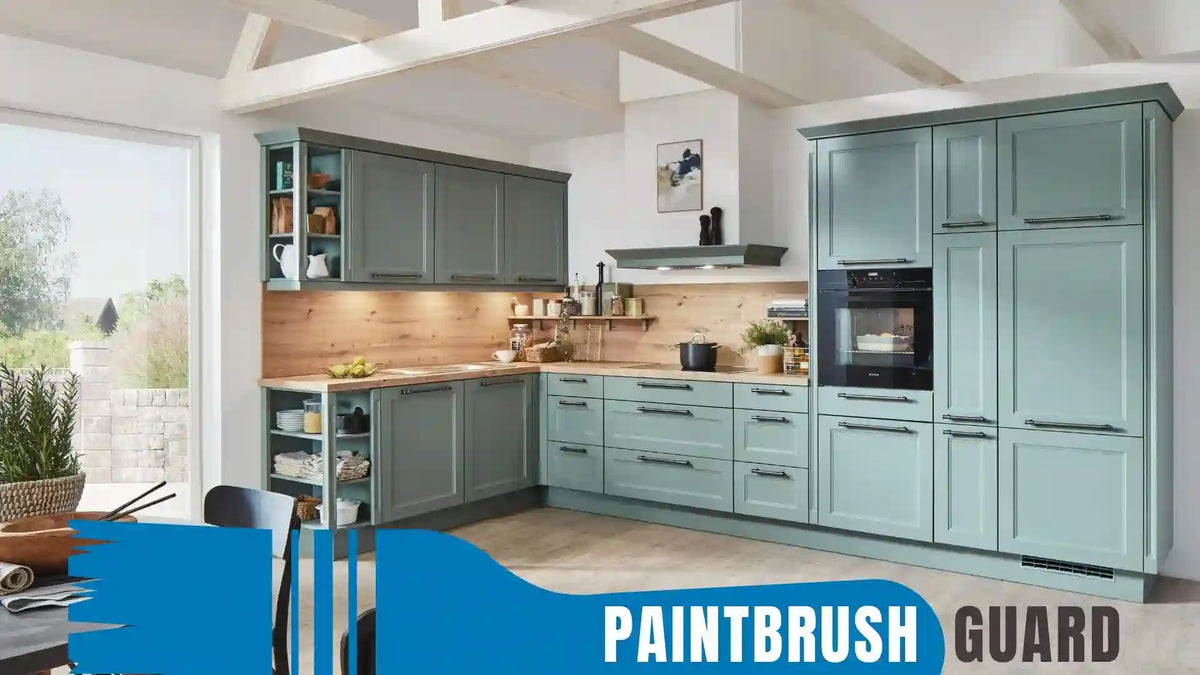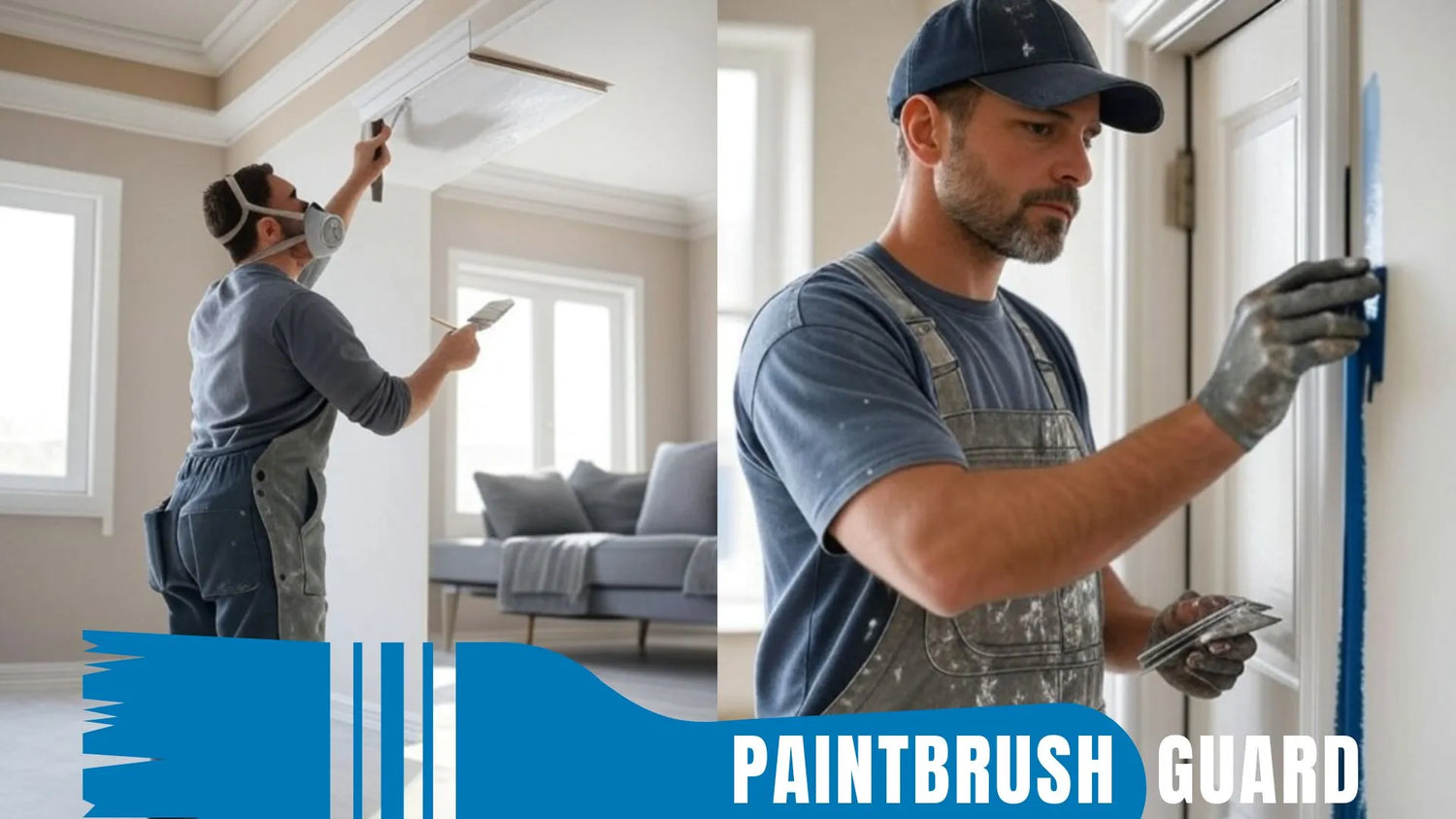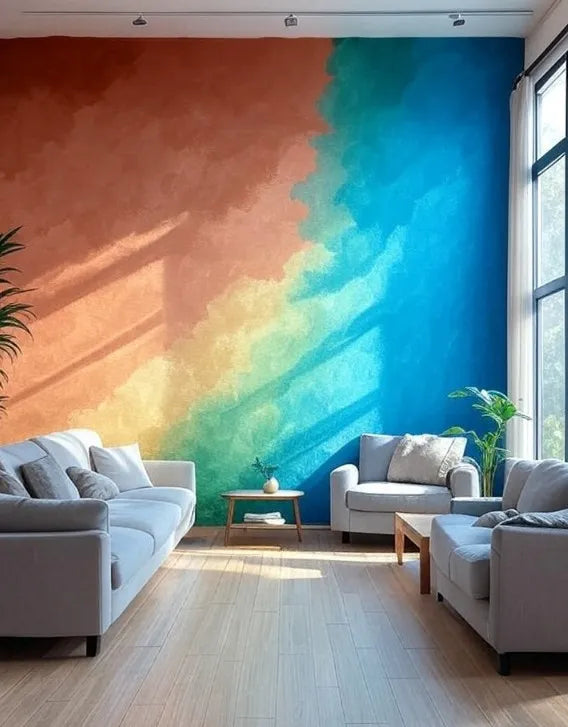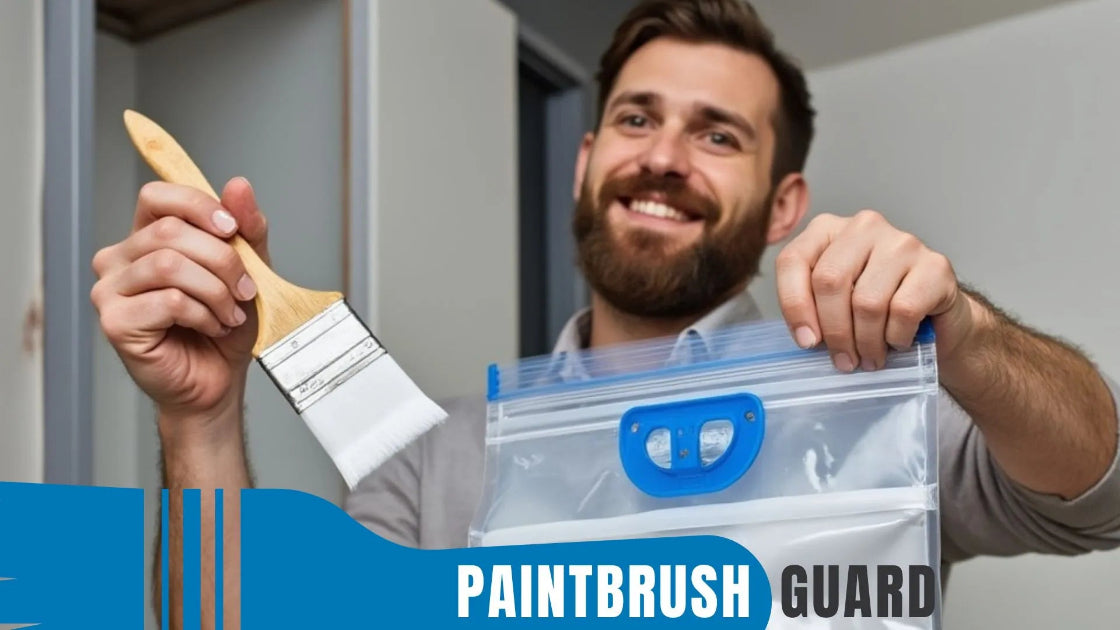
How to Paint Interior Cabinets: Step-by-Step DIY Guide for a Fresh Kitchen Glow-Up
|
Time to read 7 min
|
Time to read 7 min
Eco-friendly tips for painting interior cabinets let you achieve that sleek, updated look while slashing waste. Techniques here can cut water use significantly and minimize excess paint. This turns your project into a sustainable score. Paints and related products are major sources of indoor VOC emissions. According to the EPA, VOCs are often 2-5 times higher indoors than outdoors.
In this guide, we will cover why eco-painting matters for cabinets. We will discuss must-have low-waste tools. You will get a step-by-step zero-hassle process. We will include advanced tricks to stretch every drop. We will add ways to track your impact.
Whether you are refreshing oak lowers or shaker fronts, these sustainable painting interior cabinets strategies save cash. They save up to $50-100 per job.
They also save the earth. Ready to paint guilt-free? Let's dive in.
If you are planning to paint your house interior, in this article you will learn easy steps to make your home interior feel new again with step-by-step guides for all interior surfaces.
Cabinets soak up daily abuse. Grease, spills, and fingerprints take their toll. Repainting breathes new life into your kitchen without a full gut. But traditional methods are eco-drainers. Rinse water laced with pigments and solvents pollutes waterways.
VOCs from paints off-gas for months. This harms indoor air and health. In the United States, more than 78 million gallons of paint goes unused each year. This is approximately 10% of what consumers purchase.
Cleaning alone guzzles water. A single brush rinse can contribute to significant household waste if you are not smart about it.
Switching to green is a win-win. It creates healthier homes with fewer headaches from fumes. It lowers bills with less product tossed. Demand for low-VOC paints is booming. The global low VOC paint market is expected to grow at a CAGR of greater than 5.60%.
Plus, EPA-backed low-VOC formulas cut emissions without skimping on coverage. Low-VOC paints generally contain less than 50 g/L of VOCs.
Bullet-point sustainability stats to motivate:
Worried about paint runoff in your sink? Eco-methods make it a non-issue.
Discover how house paint colors influence mood & get expert tips on choosing the best colors for every room to create a vibrant, harmonious home environment.
Gear up with reusables and non-toxics. Think twice the life and half the trash. Skip single-use plastics. Embrace canvas and synthetics that rinse clean.
Go low-VOC or zero-VOC. Formulas under 5 g/L mean no-fume finishes. Plant-based options like soy or milk-derived biodegrade better. They cut chemical runoff.
Natural degreasers like vinegar-based dissolve grease sans solvents. Vacuum storage seals wet tools. This ditches deep rinses.
Product |
Waste Reduction |
Eco-Edge |
Low-VOC Primer |
Significantly fewer VOCs |
Water-based rinses easy |
Reusable Canvas Drop Cloths |
Zero disposables |
Lasts 50+ projects |
Plant-Based Degreaser |
No harsh runoff |
Biodegradable and pipe-safe |
Vacuum Brush Storage |
80-90% less rinse water |
Prevents hardening and reuses tools |
Paint Strainers |
Reclaims 20% excess |
Filters lumps for reuse |
These picks align with EPA greener guidelines. They ensure your cabinet job is as kind to pipes as to the planet.
With no cleanup required after a painting session, you can take a short break mid-project or wrap up your painting for the day, your brush stays ready without the need to clean.
Nail a pro refresh with minimal mess. This process for sustainable painting interior cabinets works for 10-20 doors. It takes 6-8 hours active time. Focus on thin layers and dry methods to conserve.
Dry everything possible. Wet prep wastes water.
Pro tip: This skips several gallons of soapy water per session.
One skimpy coat seals without excess.
Water hack: Wipe spills with damp rags. Squeeze hard. Do not soak.
Two coats max. Batch for efficiency.
Post-coat: Scrape excess into cans. Rinse tools in a bucket of soapy water. Strain and reuse the solution for next round. Vacuum-store brushes immediately. This saves several gallons per project by skipping full flushes.
Dab leftovers on scrap wood. Strain and store in sealed jars for touch-ups. Donate extras to community centers. This diverts gallons from trash.
Waste-Reduction Checklist |
Tip |
Strain before use |
Reclaims lumps |
Thin coats only |
Less drips to wipe |
Bucket-rinse cycle |
Reuse water 2-3x |
Air-dry between |
No rush flushes |
Full dry: 24 hours.
Unlock the best overnight paint brush storage tips to keep your brushes soft and ready-to-use. Simple, mess-free tips for that save time and extend tool life.
Level up with these pro moves. Turn scraps into savings.
Biodegradable painter's tape dissolves harmlessly. AI color apps scan walls. They avoid wrong buys. For cabinets, water-based enamels dry tack-free fast. This cuts hang-time energy.
These slash your footprint further. Imagine zero landfill from one job.
This guide showcases the top 8 gray paint colors, available on Amazon, selected based on current popularity, including favorites like Agreeable Gray.
Track wins to stay motivated. Simple math shows your green glow.
Formula: Water Saved = (Gallons Rinsed Traditionally × Sessions) - (Bucket Reuse Savings). Example: 5 gallons per session × 3 = 15. Minus 12 from cycling = 3 gallons conserved.
Metric |
Before (Traditional) |
After (Eco) |
Savings |
Water Used |
15-20 gallons |
3-5 gallons |
Significant |
Paint Wasted |
10% of can |
<5% |
$10-20 |
VOC Emissions |
High (>50 g/L) |
Low (<5 g/L) |
Significantly healthier air |
Share your stats in comments. Let's build a waste-free community!
Find the 7 best green paint colors for your interior walls with our top picks. Learn about paint finnish, the natural vibe and rooms to apply for perfection.
Eco-friendly tips for painting interior cabinets are your ticket to a stunning kitchen minus the waste. Thin coats, smart rinses, and low-VOC heroes cut water by gallons and paint by quarts. They also dodge VOC pitfalls. From degreasing dry to storing sealed, these hacks prove green does not mean grit.
How can I paint cabinets without wasting paint? You have got the blueprint. Go green on your cabinets today. Shop our water-saving vacuum storage tool and start sustainably!
Paint cabinets without wasting paint by straining before use to remove lumps. Apply thin coats with minimal loading. Recycle leftovers in sealed jars for touch-ups. This reclaims up to 20% more product. Pair with precise "W" rolling to avoid excess buildup. Donate extras locally to divert from landfills. Simple swaps stretch every can.
Water-saving hacks for cabinet painting cleanup include bucket-rinsing. Soak tools in soapy water. Strain and reuse the solution 2-3 times. Vacuum-store to skip deep flushes. This saves several gallons per job. Wipe spills with squeezed microfiber. Air-dry between coats. Traditional sink runs waste volumes. These keep pipes clear and eco-kind.
Best low-VOC paints for eco-friendly kitchen cabinets are zero-VOC formulas under 5 g/L. Water-based enamels rinse clean and off-gas minimally. They seal grease-prone surfaces durably without health hits. Opt for plant-derived for extra green. Coverage rivals traditional. They are healthier for food prep zones.
Sustainable prep for cabinets includes dry-sanding with vacuum catch to nix dust water. Degrease via vinegar cloths. No rinse needed. Label doors for efficient rehang. Skip solvent strippers. Baking soda pastes scrub gently. This cuts chemical runoff and water significantly. It preps flawlessly for low-waste coats.
Reduce paint waste when painting interior cabinets by batching small sections. Offload excess on tray grids. Strain for reuse. This diverts 10% from trash. Test tints digitally to avoid mismatches. Modular cloths catch drips for easy reclaim. Long-term, low-VOC lasts longer. This means fewer repaints.

Learn about eco-friendly painting, tips and tutorials on house interior and exterior surfaces, so you can get started with your project without any surprices during or after your painting.

Learn how interior house paint colors influence mood with expert tips on room preference so you can pick the best colors for a harmonious home environment.
We focus on the most popular shades for each interior colors, so you don't miss no matter what color you pick.

Learn how this innovative tool allows you to store paintbrushes without the need for immediate cleaning, offering significant advantages in time savings, water conservation, reduced chemical pollution, and lower costs for supplies.


